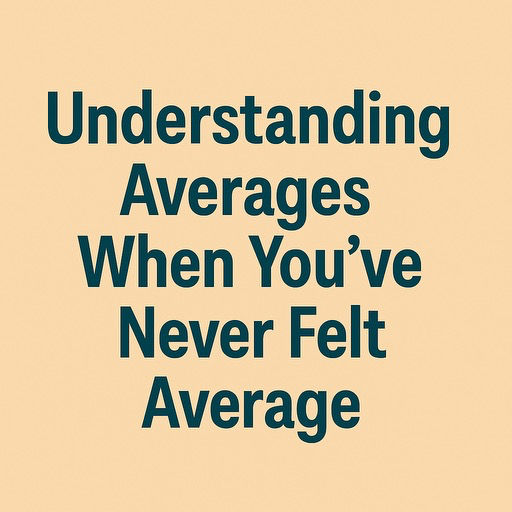📊 Understanding Averages When You’ve Never Felt Average
- James Link

- Apr 7
- 2 min read

For many autistic individuals, statistics isn’t just about numbers — it’s about stories we don’t often see ourselves in. Numbers are often used to generalize, to simplify, to describe “most people.” But what happens when you’ve never really felt like “most people”?
Chapter 7 of my statistics workbook focuses on measures of central tendency (mean, median, and mode) and measures of variability (range, standard deviation, variance). These are tools that help researchers describe a group or a dataset in a quick snapshot. For neurotypical people, those snapshots may feel accurate. But for neurodivergent people like me, those averages can feel alienating.
The mean can be skewed by outliers, and guess what? We often are those outliers. But that doesn’t mean we don’t belong in the dataset — it means the way we interpret that data needs to account for diversity and lived experience. Averages can erase individuality. Variability, on the other hand, gives us a more honest picture of just how different people within a group might be. And that, to me, is where the real value of data lies: in its ability to reflect both consistency and complexity.
As an autistic person, I tend to observe and measure things instinctively. I’m constantly tracking patterns — how my energy shifts throughout the day, how different environments affect my focus, how certain people or settings raise or lower my stress levels. While I didn’t always call it “data,” that’s exactly what it is. And statistical tools like the paired t-test give structure to that intuition.
For example, I might try using noise-canceling headphones during a busy work shift or school assignment, then compare my focus level to a day without them. A paired t-test could help me see whether the difference is significant. It’s a simple tool, but it gives me something tangible to point to when someone says, “Do you really need that?”
This chapter really resonated with me because it helped bridge a gap I’ve often felt between what I know works for me, and what others might demand “proof” of before granting accommodations. It reminded me that statistics — when used thoughtfully — can actually support the autistic experience, not erase it.
So many of us are asked to advocate for ourselves in systems that were never designed with us in mind. That advocacy can be exhausting, especially when you’re constantly explaining or defending your needs. But data gives us language. It gives us evidence. It gives us a way to say, “This works for me — and here’s why.”
This chapter didn’t just teach me how to describe a dataset. It showed me how statistics can be a tool for empowerment. When we center variability and look beyond the average, we start to make room for everyone — including those of us who’ve spent a lifetime feeling like we don’t fit the mold.





Comments